Mammals
Media

Species Types
Scientific Name
Ictidomys tridecemlineatus
Description
The thirteen-lined ground squirrel has 13 alternating brown and whitish lines (some may be broken into spots) along its back and sides, creating rows of whitish spots within dark lines. It stands upright to survey its surroundings and dives into its burrow when it senses danger.
Media

Species Types
Scientific Name
Tamias striatus
Description
Chipmunks are sleek, attractive, active ground-dwelling squirrels. They live in tunnels but are generally out during the day, making them one of the few mammals that people can enjoy watching.
Media
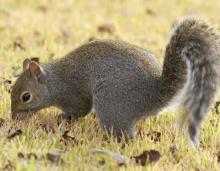
Species Types
Scientific Name
Sciurus carolinensis and Sciurus niger
Description
The eastern gray squirrel and eastern fox squirrel are both very common in Missouri. Their names describe their general coat color: the first is grayish, the other a foxy red.
Media
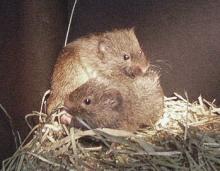
Species Types
Scientific Name
Microtus ochrogaster, M. pinetorum, and M. pennsylvanicus
Description
There are three species of voles in Missouri: prairie, meadow, and woodland voles. These mouselike rodents have rounded, blunt snouts, chisel-shaped front teeth, and short tails.
Media

Species Types
Scientific Name
Scalopus aquaticus
Description
Eastern moles are plush-furred, large-handed critters infamous for disfiguring lawns as they tunnel belowground hunting for grubs and cutworms — many of which are also dreaded by landscapers!
Media
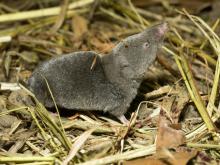
Species Types
Scientific Name
Sorex, Blarina, and Cryptotis spp.
Description
Six species of shrews occur in Missouri. They are mouselike but do not have the chisel-like front teeth of rodents. Instead, they have sharp, spiky teeth for hunting prey.
Media

Species Types
Scientific Name
Odocoileus virginianus
Description
In summer, white-tailed deer are reddish-brown to tan above; in winter, they are grayish. The throat and belly are white. This common Missouri deer is named for the bright white of its flaglike tail.
Media
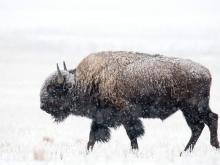
Species Types
Scientific Name
Bison bison
Description
The largest mammal to occur in Missouri during historic times, the American bison lives in wild and semi-wild herds on private ranges and on public lands, where people can see them and imagine the immense herds that used to be.
Media

Species Types
Scientific Name
Sus scrofa
Description
Feral hogs cause millions of dollars in agricultural, environmental, and property damage. As they root and wallow, they plow the soil to depths of 2–8 inches — sometimes for many acres! And this is just the beginning of the trouble they can cause to humans, livestock, and the environment.
Media
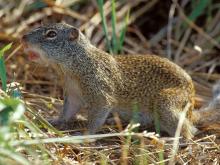
Species Types
Scientific Name
Poliocitellus franklinii (formerly Spermophilus franklinii)
Description
Franklin’s ground squirrel is brownish gray speckled with black, looking a little like an eastern gray squirrel but with a less bushy tail and smaller ears. It occurs in and near grasslands in the northern quarter of Missouri.
See Also
About Mammals in Missouri
More than 70 species of wild mammals live in Missouri: opossums; shrews and moles; bats; rabbits; woodchuck, squirrels, beaver, mice, voles, and other rodents; coyote, foxes, bear, raccoon, weasels, otter, mink, skunks, bobcat, and other carnivores; deer and elk; and more. Most of us recognize mammals easily — they have fur, are warm-blooded, nurse their young, and breathe air.





















